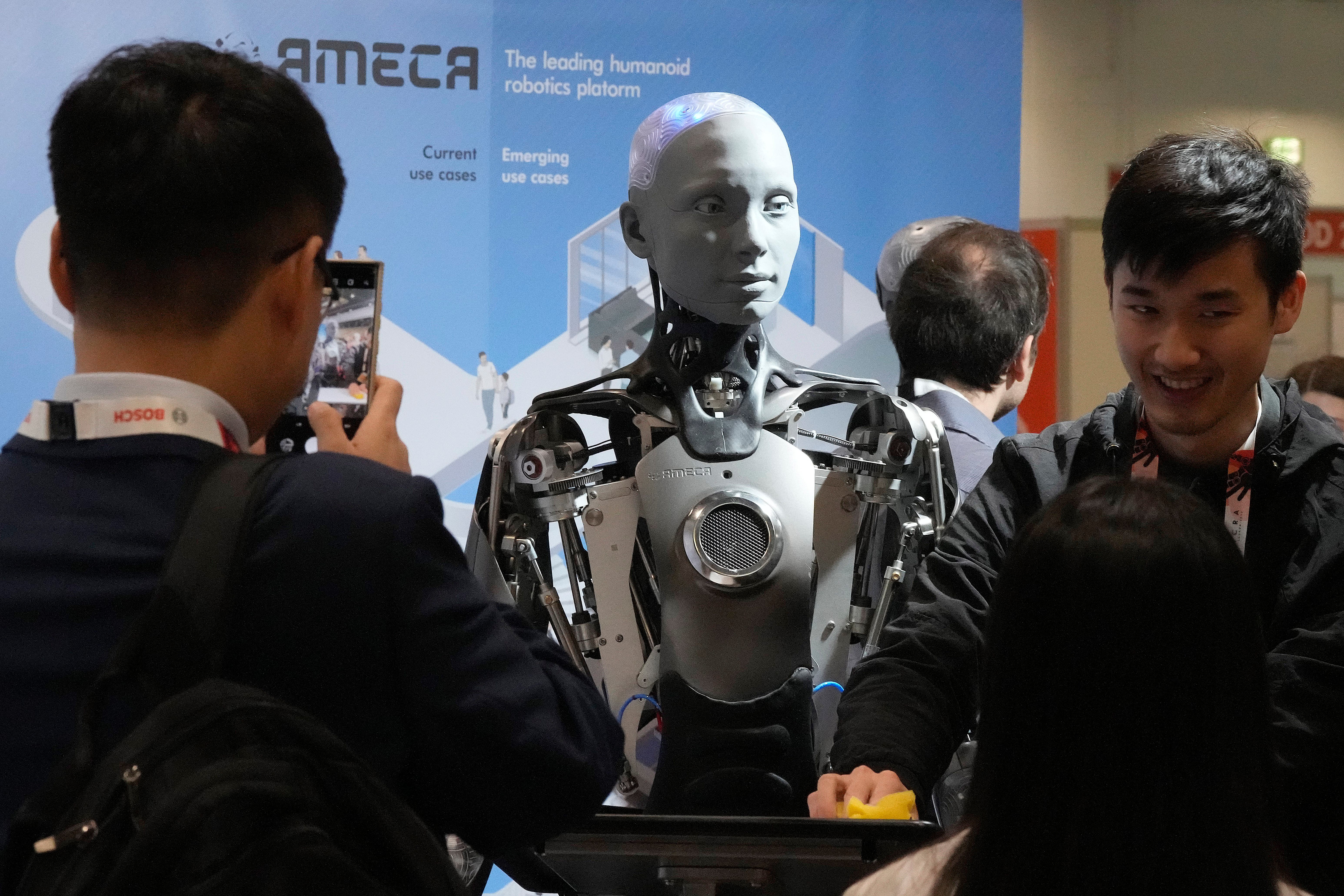Humanoid robots best suited for interaction and not chores, says robotics pioneer
Robots that perform domestic chores do not need a human shape, argues Cornwall-based Will Jackson.

Your support helps us to tell the story
From reproductive rights to climate change to Big Tech, The Independent is on the ground when the story is developing. Whether it's investigating the financials of Elon Musk's pro-Trump PAC or producing our latest documentary, 'The A Word', which shines a light on the American women fighting for reproductive rights, we know how important it is to parse out the facts from the messaging.
At such a critical moment in US history, we need reporters on the ground. Your donation allows us to keep sending journalists to speak to both sides of the story.
The Independent is trusted by Americans across the entire political spectrum. And unlike many other quality news outlets, we choose not to lock Americans out of our reporting and analysis with paywalls. We believe quality journalism should be available to everyone, paid for by those who can afford it.
Your support makes all the difference.Robots that look and act like people are best suited for human interaction and not domestic chores like unloading the dishwasher, a British robotics pioneer has said.
Will Jackson, founder and director or Cornwall-based robotics firm Engineered Arts, said it does not make business sense to design humanoid robots for low-value labour such as handling crockery – which can be a difficult task in itself.
Speaking at the IEEE International Conference on Robotics and Automation (ICRA) at ExCel in London, he said: “Throughout our life, Engineered Arts miraculously managed to be mostly a profitable company, and I really wanted to look at the business case for for humanoid robots – not just very lifelike humanoid robots, but I’m stretching that to anything with two arms, two legs and a head.
“So ideas – applications – with very high technical difficulty, with low financial value and low human value, and low interaction – to my mind – does not really make sense.”
Founded in 2004, Engineered Arts installed their first humanoid robot at Carnegie Science Center in Pittsburgh in 2009.
The company has grown to over 40 people with robots installed in more than 27 countries.
In 2021, Engineered Arts unveiled its most advanced humanoid, called Ameca, which has motors designed to make human-like facial expressions.
It is fluent in multiple languages – including French, German, English and Chinese – and can compose a poem or make drawings on request.
in 2022, Ameca became the first robot to deliver a Christmas message – which was generated using artificial intelligence.
The robot tackled tough subjects such as the war in Ukraine, the death of the Queen, and climate change, which was broadcast on Channel 4.
Mr Jackson said humanoid robots like Ameca are not meant for household chores that can be performed by a machine, such as a dishwasher, which uses powerful jets and 90C water to clean dishes.
He added: “You don’t need a human shape when you can use automation engineering to do something super human.”
Mr Jackson said that placing high value on human interaction makes sense from a business perspective when it comes to humanoid robots.
He said: “It’s about entertainment. It’s about connection with people – communication.
“It’s the experience of talking with a humanoid robot.”
Ameca uses AI technology – similar to that used by ChatGPT – to communicate with people.
Mr Jackson said humanoid robots like Ameca could be deployed in care homes where they could provide entertainment with storytelling or placed in hotels to help with guest check-ins.
The team at Engineered Arts are also looking at designing humanoid robots to play board games such as chess.
Mr Jackson said: “Our plan, actually, is to make the robot not very good at chess and actually lose most of its games because the fun is actually just in the participation.
“It’s about the conversation.
“It’s about interaction with people – so these are the emerging applications that we think are going to be doable in the next two to three years.”